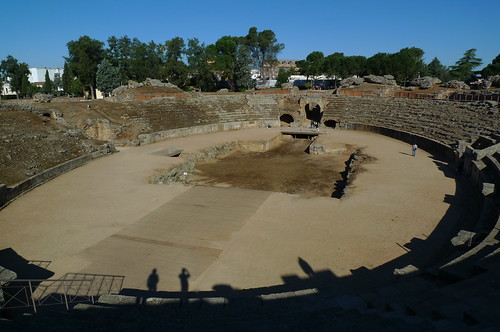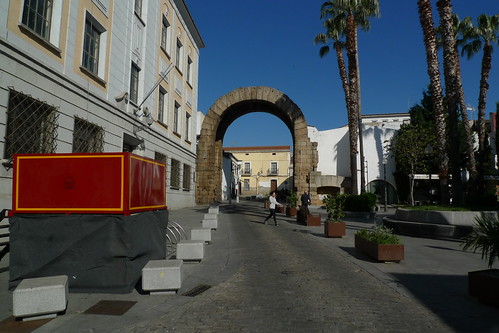Merida is not usually high on Spain itineraries, but came highly recommended. We were not disappointed. On the less than one mile walk from the bus station to our hotel, we walked by five Roman sites. We busied ourselves close to two whole days checking off Roman sites big and small, major and minor. I got the feeling that these people would like to dig up the whole town if they could; and invariably they will make big finds.
We didn't think so much of town itself, but the Roman sites are amazing. John was going like -- if I were a high school Latin teacher, I'd bring my class here instead of Rome.
It is possible to have too many Roman Ruins pics, so just the highlights - I hope. ;-)
On the road to Spain, we passed many marble quarries near Evora...

...and a huge aqueduct on the outskirts of Elvas.

The Ancient Roman Temple near our hotel that we walked by at least times a day. The structure at the back of the temple is from the Moorish period and there are also Visigoth structures at this site. Very cool!

The Roman Amphitheater...

...is next to the Roman Theater.


The Museum was excellent, and with a Roman Road underneath.



The Roman Bridge is next to the Arab Fortress with its very cool cistern.


Many of the Roman sites lie underneath existing buildings that now sit high on pilotes.



One of the several Roman Aqueducts in Merida (at dusk).

The Arab Fortress at night.

This lesser Roman site, it's free, is thought to have been a pit for snow storage.

The Ancient Circus was huge.


The Roman arch known as Trajan's Arch.

The Visigoth Art Museum was better than expected.

And finally, Saint Eulalia was born and martyred in Merida. Here are the excavations under her tomb and eponymous church.


2 comments:
Impressive
@Kathy, Have you been to Merida?
Post a Comment